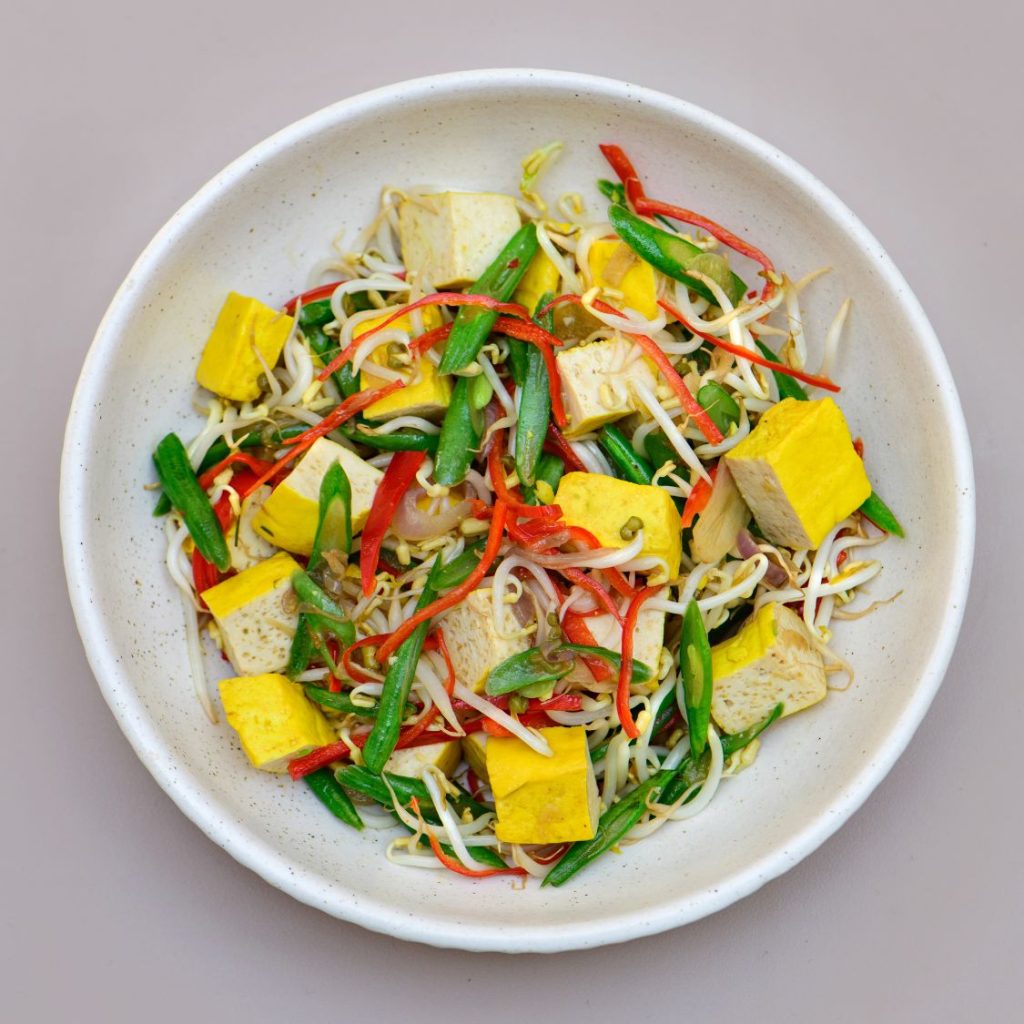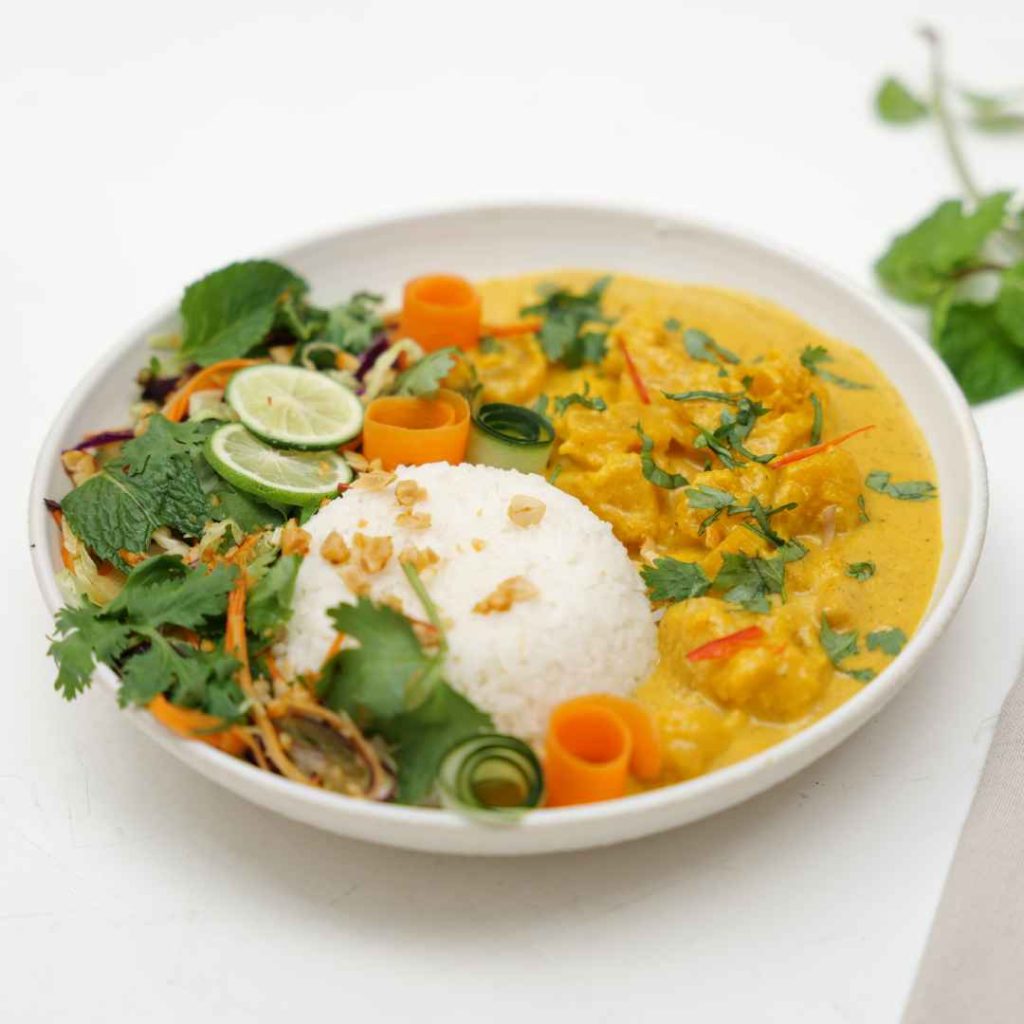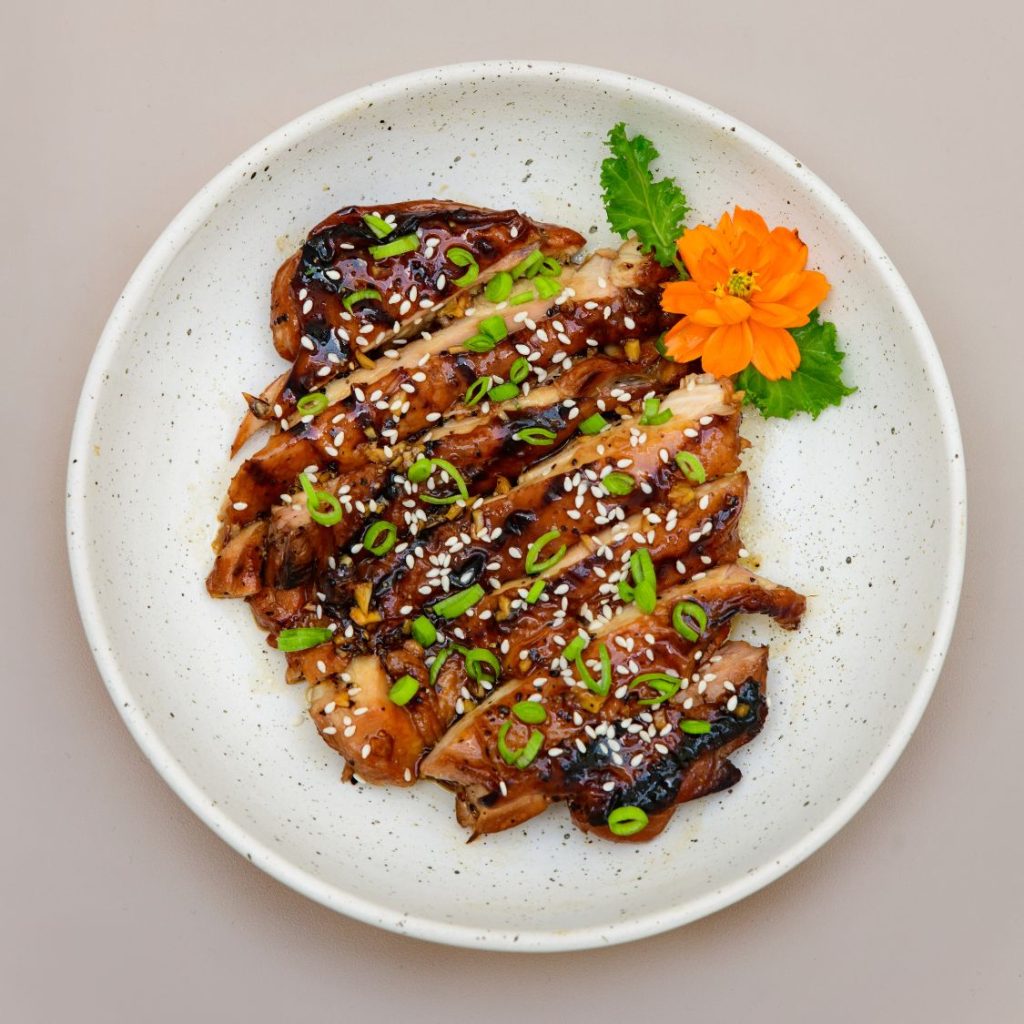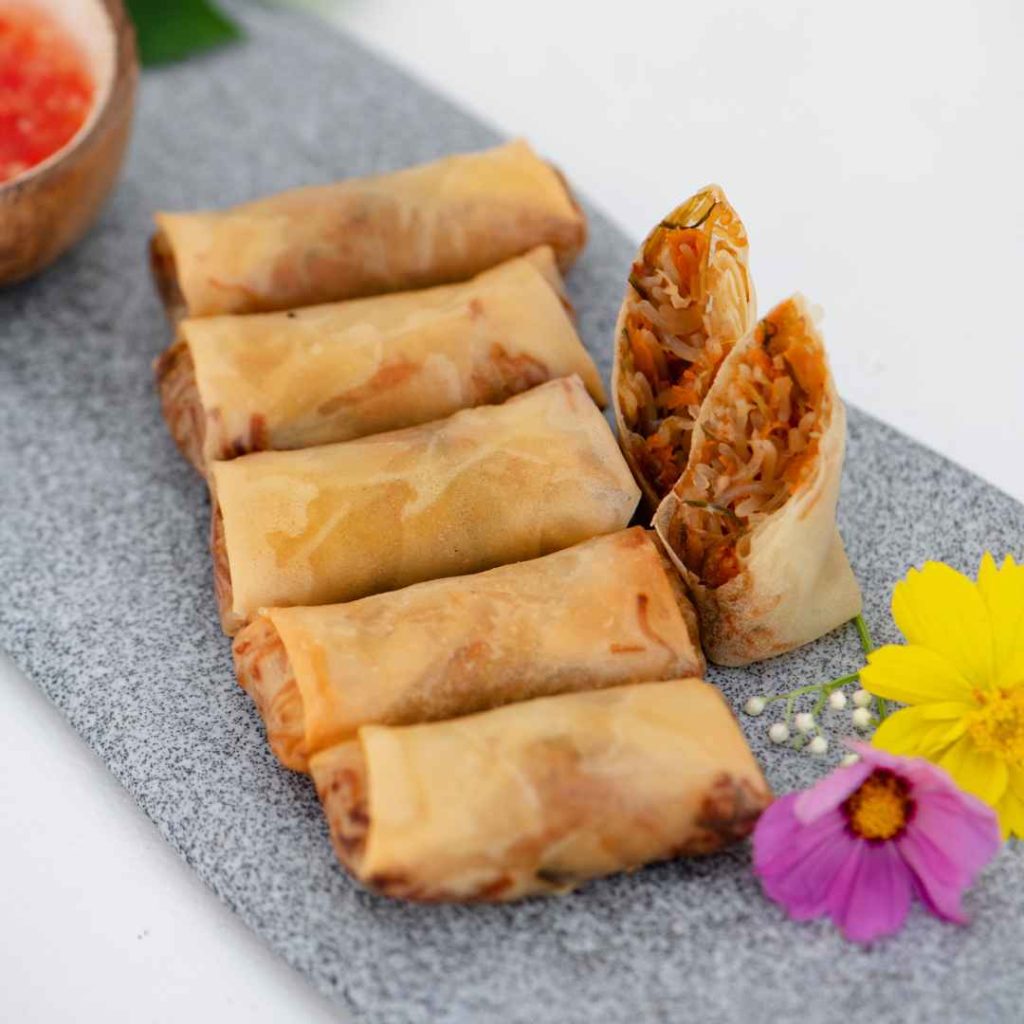Indonesian food hits different. We’re talking beef rendang so tender it melts in your mouth, nasi campur bowls packed with 10+ dishes, and sambal that’ll make you sweat (in a good way).
From crispy satay to jackfruit curry that even meat-eaters love, this cuisine has something for literally everyone.
This guide breaks down what to eat and where to find the best Indonesian food in Ubud – spoiler: there’s one spot you absolutely can’t miss.
Everything You Need to Know About Indonesian Food
Not sure where to start when it comes to Indonesian food in Ubud? You’ve come to the right place! Check out our quick tips to nail your dining experience.
- Best time to eat: Hit warungs between 11AM-1PM when food is freshly made, or visit around 6-7PM for dinner when everything’s still hot
- Price check: Warungs cost 15K-50K IDR per meal (super cheap!), while sit-down restaurants run 80K-150K IDR – both are worth it
- Ordering hack: Point at what looks good if you don’t know the names – Indonesians are super friendly and will help you choose
- Don’t skip dessert: Indonesian sweets like dadar gulung and es cendol are nothing like Western desserts – they’re coconut-y, not-too-sweet, and refreshing
- Love rich flavors? Start with beef rendang or slow-cooked curries – these dishes simmer for hours so the meat absorbs all those coconut and spice flavors
- Vegan or vegetarian? Indonesia is plant-based heaven – try tempeh goreng, gado-gado, sayur lodeh, or the maple-glazed tempeh at modern spots
- Spice lovers unite: Always ask for extra sambal on the side, and try sambal matah (raw Balinese style) or sambal terasi (with shrimp paste) for maximum heat
- Can’t handle spicy? No worries – nasi campur lets you pick mild dishes, and you can always say “tidak pedas” (not spicy) when ordering
- Want to try everything? Custom nasi campur bowls give you 10+ dishes on one plate – it’s literally the best way to sample Indonesian cuisine
Our Favorite Indonesian Dishes to Try When in Ubud

When it comes to Indonesian food, beef rendang and nasi campur steal the show. Beef rendang offers melt-in-your-mouth meat that has been slow-cooked in coconut and spices for hours, creating layers of deep, complex flavors. Nasi campur is your gateway to Indonesian cuisine – a customizable rice bowl where you pick from multiple curries, proteins, and sides. Both dishes showcase what makes Indonesian food special: bold spices, patient cooking, and unforgettable taste.
For the absolute best versions in Ubud, head to THIS IS BALI. This award-winning restaurant (Best Indonesian Restaurant in the World 2024) serves traditional dishes with a modern twist in the most Instagram-worthy setting.
Their custom nasi campur uses a unique stamp card system, letting you build your dream bowl from MSG-free, 100% halal options. From their legendary beef rendang to maple-glazed tempeh and jackfruit curry, every dish celebrates Indonesia’s rich culinary heritage with premium local ingredients.
What Makes Indonesian Food Special
Complex Flavor Profiles
Indonesian food doesn’t play it safe with flavors. Each bite brings you sweet, salty, sour, spicy, and umami in one, all dancing together on your tongue. Coconut milk adds silky creaminess to curries, while tamarind brings a tangy punch that wakes everything up.
Palm sugar balances the chili heat perfectly, creating that addictive sweet-spicy combination you’ll crave long after leaving Bali. This flavor complexity separates Indonesian cuisine from its Southeast Asian neighbors – it’s bolder, richer, and more layered than you’d expect.
The Spice Islands Heritage
Indonesia earned the name “Spice Islands” for good reason. The historic spice trade brought the world to these shores, and Indonesians turned foreign influences into something completely their own. Turmeric stains dishes golden yellow, galangal adds citrusy depth, and lemongrass perfumes everything it touches.
Kaffir lime leaves bring brightness, while candlenut creates velvety textures in sauces. Each Indonesian region developed unique spice blends over centuries. What you taste in Padang differs completely from Javanese or Balinese cooking, yet all share that distinctive Indonesian soul.
Cooking Techniques That Build Flavor
Indonesian cooks know patience pays off. Beef rendang simmers for 3-6 hours until the meat practically melts off your fork. This slow-cooking method lets coconut milk reduce into a thick, dark sauce that coats every fiber of meat with concentrated spice flavors.
Grilling over charcoal fire adds smoky depth to satay and ikan bakar (grilled fish). The flames kiss the meat, creating that irresistible char you can’t replicate any other way.
Fermentation plays a huge role too – tempeh transforms humble soybeans into protein-packed goodness, while sambal terasi gets its funky depth from fermented shrimp paste.
50+ MustTry Indonesian Dishes
RiceBased Dishes
Nasi Goreng
This isn’t your regular fried rice. The secret is kecap manis (sweet soy sauce) that caramelizes everything into this addictive sweetsavory combo. They toss it with garlic, shallots, chili, and usually top it with a runny fried egg. Break that yolk and mix it all up – that’s how locals eat it. Bonus points for the giant prawn crackers on the side.
Nasi Campur
Literally means “mixed rice” and it’s your cheat code to trying everything. You get rice plus whatever the warung made that day – could be rendang, grilled fish, tempeh, veggies, sambal, the works. No two nasi campur plates are the same, which is why you should order it at every single place you visit.
Nasi Uduk
Imagine rice cooked in coconut milk with lemongrass and bay leaves until every grain is fragrant and slightly sweet. That’s nasi uduk. Indonesians eat this for breakfast with fried chicken and sambal. Sounds heavy but trust me, it’s the perfect way to start your day in Bali.
Nasi Kuning
The golden rice you see at every celebration. Turmeric gives it that yellow color and earthy flavor. They usually mold it into a cone shape and surround it with all the good stuff – fried chicken, tempeh, eggs you name it. It’s basically the party rice.
Nasi Liwet
Javanesestyle rice cooked with chicken stock and coconut milk. It’s richer than regular steamed rice and comes with shredded chicken, chayote, and this crispy thing called rempeyek. Super comforting when you need something warm and filling.
Lontong
Compressed rice cakes wrapped in banana leaves. Sounds boring but it’s perfect for soaking up all those curry sauces. You’ll find it in sayur lodeh (veggie curry) or lontong sayur (rice cakes in coconut soup).

Meat & Poultry Favorites
Beef Rendang
CNN called this the world’s most delicious food and they’re not wrong. The beef cooks for hours in coconut milk with galangal, lemongrass, turmeric, ginger, and a bunch of chilies. It ends up so tender it falls apart, covered in this thick, dark sauce that’s insanely flavorful. Don’t leave Indonesia without trying this.
Ayam Goreng
Indonesian fried chicken hits different because they marinate it in turmeric, coriander, garlic, and ginger before frying. The result? Crispy outside, juicy inside, and way more flavor than KFC could ever dream of. Best eaten with your hands and lots of sambal.
Sate Ayam (Chicken Satay)
These little grilled skewers are everywhere for a reason. Chicken pieces get threaded on sticks, grilled over hot charcoal, basted with sweet soy sauce, then dunked in peanut sauce. The peanut sauce is creamy, slightly sweet, with lime and a touch of chili. Addictive stuff.
Sate Kambing (Goat Satay)
Like chicken satay but with goat meat. It’s got a stronger, gamier flavor that some people love. Usually served with sweet soy sauce instead of peanut sauce, plus pickled cucumber and onions to cut the richness.
Ayam Bakar
Grilled chicken that’s been marinated in spice paste and basted with kecap manis while grilling. The charcoal fire adds this smoky flavor and the sweet soy sauce creates a sticky glaze. Perfect with steamed rice and sambal.
Soto Ayam
Chicken soup but make it Indonesian. The broth is yellow from turmeric, filled with shredded chicken, glass noodles, hardboiled eggs, and topped with crispy fried shallots. Squeeze fresh lime over it, add sambal, and you’ve got the ultimate comfort food.
Ayam Betutu
This Balinese dish takes forever to make, but it’s worth it. The whole chicken gets stuffed with spice paste, wrapped in banana leaves, and slowroasted until it’s falling off the bone. The meat absorbs all those spices and gets super tender.
Gulai Ayam
Chicken curry Indonesianstyle. It’s milder than Thai curry but rich with coconut milk, turmeric, and lemongrass. The chicken pieces cook until they’re tender and the sauce gets thick and creamy.
Bebek Goreng
Fried duck that’s crispy on the outside and tender inside. Duck has more flavor than chicken, and when it’s fried Indonesianstyle with all those spices? Game changer. Usually comes with lalapan (raw veggies) and sambal.
Bebek Betutu
The Balines version of slowroasted duck. Like ayam betutu but with duck, which means more flavor. The duck marinates in spice paste overnight then roasts for hours. The result is meat so tender you can pull it apart with a fork.

Vegetarian & Vegan Winners
GadoGado This Indonesian salad is no joke. You get steamed veggies (cabbage, long beans, bean sprouts), boiled potatoes, tofu, tempeh, and hardboiled eggs, all drowned in a thick peanut sauce. Skip the egg and it’s vegan. It’s filling enough to be a full meal.
Tempeh Goreng Fried tempeh is crispy outside, nutty inside, and nothing like the bland tempeh back home. Indonesian tempeh is fresh, made daily, and usually fried until golden. Eat it with rice and sambal, or just grab it as a snack.
Maple Glazed Tempeh Modern Indonesian restaurants like THIS IS BALI do this amazing thing where they glaze tempeh with maple syrup and grill it. The glaze caramelizes and creates this sweetsavory protein that even meat lovers can’t resist.
Tahu Goreng Fried tofu Indonesianstyle. They use super fresh tofu, fry it until crispy, then serve it with sweet soy sauce and fresh chilies. Simple but crazy good. Some versions stuff the tofu with veggies before frying.
Tahu Isi Stuffed tofu pockets filled with bean sprouts, carrots, and cabbage, then deepfried. You get this crispy shell with a veggie filling, served with peanut sauce or sweet chili sauce for dipping.
Sayur Lodeh Veggie coconut curry that’s mild and comforting. Cabbage, long beans, chayote, and sometimes young jackfruit all simmered in coconut milk with spices. Perfect if you want something tasty but not spicy.
Pecel Javanese vegetable salad with spicy peanut sauce. The veggies are blanched, not raw, and the peanut sauce has more kick than gadogado. You’ll find it at breakfast spots, served with rice and rempeyek (peanut crackers).
Urap Steamed vegetables mixed with grated coconut and spices. It’s seasoned so well that you won’t even miss the protein. The coconut adds richness and the spices make it way more interesting than regular steamed veggies.
Cap Cay Indonesian stirfried vegetables in savory sauce. It’s got Chinese influence but Indonesian flavors. Crispy veggies in a thick, umamipacked sauce. Ask for it without oyster sauce to keep it vegan.

Curry & Stew Dishes
Jackfruit Curry (Gulai Nangka)
Young jackfruit cooked in coconut curry until it soaks up all the spices. The texture is similar to pulled pork, which is why vegetarians love it. It’s rich, satisfying, and way better than you’d expect from a fruit.
Gulai Kambing
Goat curry with coconut milk and spices. The goat meat gets tender from slow cooking and the curry is aromatic from all the herbs. It’s milder than you’d think, with more depth than heat.
Rawon
This black beef soup from East Java looks crazy but tastes amazing. The dark color comes from keluak (black nut) that gives it this unique earthy, slightly bitter flavor. Served with bean sprouts, rice, and salted duck eggs.
Sop Buntut
Oxtail soup that’s rich and hearty. The oxtail cooks until the meat falls off the bone, the broth is clear but flavorful, and you get carrots and potatoes. Served with rice, sambal, and crispy crackers. It’s fancy comfort food.
Soto Betawi
Jakartastyle soup with beef and offal in coconut milk broth. The creamy broth is flavored with lemongrass and galangal. If you’re not into offal, just ask for the beef version.
Opor Ayam
Mild chicken curry in coconut milk. It’s not spicy at all – just creamy, aromatic, and comforting. Usually served during Lebaran (Indonesian Eid) but you can find it yearround.

Grilled & Wrapped Specialties
Pepes Ikan
Fish wrapped in banana leaves with spice paste, then steamed. The fish is perfectly cooked, flaky, and infused with all those spices, while the banana leaf adds a subtle flavor too. Unwrap and prepare to be hit with aromatic steam perfection.
Sate Lilit
Balinese minced meat satay where the meat paste wraps around lemongrass or bamboo sticks. It’s made with fish, chicken, or pork mixed with grated coconut and spices. Way more flavorful than regular satay.
Ikan Bakar
Grilled fish that’s been rubbed with spice paste and grilled over charcoal. The skin gets crispy and slightly charred, the meat stays moist and flaky. It always comes with sambal and rice. Pick a fresh fish and watch them grill it.
Ikan Pepes
Similar to pepes but specifically fish. The fish, spice paste, and sometimes tomatoes and basil all get wrapped in banana leaves and grilled. The result is smoky, aromatic, and full of flavour.
Ayam Taliwang
Grilled chicken from Lombok that’s seriously spicy. The chicken gets butterflied, marinated in this fiery spice paste, then grilled. If you love heat, this is your dish. If not, ask for “tidak pedas.”

Noodle Dishes
Mie Goreng
Indonesian fried noodles that are sweet, savory, and sometimes spicy all at once. They use egg noodles, sweet soy sauce, garlic, vegetables, and your choice of protein. It’s completely different to Chinese chow mein, but in a good way!
Mie Ayam
Think chicken noodle soup, but Indonesianstyle. You get egg noodles, seasoned minced chicken, wontons, and this flavorful broth. Some places serve it dry (without soup) with all the toppings on top.
Bakso
Meatball soup that Indonesians are obsessed with. The meatballs are bouncy from tapioca, the broth is savory, and you get noodles, fried wontons, and sometimes fried tofu. Add lots of sambal and vinegar.
Mie Rebus
Boiled noodles in thick, sweetsavory gravy. The gravy is made from sweet potato, so it’s naturally thick and slightly sweet. Topped with hardboiled eggs, fried shallots, and lime delicious!

Snacks & Street Food
Gorengan
Literally means “fried things” and you’ll see these everywhere. Deepfried snacks like fried tempeh, tofu, cassava, sweet potato, or banana fritters. Super cheap, super crispy, perfect with chili.
Pisang Goreng
Fried banana fritters that are crispy outside and sweet inside. Some vendors coat them in rice flour batter, others in wheat flour. Both versions are addictive, especially when they’re fresh and hot.
Lemper
Sticky rice filled with spiced chicken, wrapped in banana leaves. It’s a popular snack that’s savory, filling, and easy to eat on the go. The sticky rice is cooked in coconut milk so it’s rich and fragrant.
Risoles
Indonesian spring rolls filled with chicken, vegetables, or beef, coated in breadcrumbs and fried. Crispy outside, creamy filling inside. Usually served with sweet chili sauce.
Martabak Telur
Savory stuffed pancake with eggs, meat, and veggies. It’s crispy, flaky, and filled with all the good stuff. Don’t confuse it with martabak manis (sweet pancake) – they’re completely different.

Sides & Condiments
Sambal
The soul of Indonesian food. Every region has their own version – sambal matah (raw Balinese with shallots and lemongrass), sambal terasi (with shrimp paste), sambal bajak (fried with tomatoes), sambal dabudabu (Manadostyle with fresh tomatoes). Start small because some are seriously spicy.
Kerupuk
Prawn crackers or fish crackers that puff up when fried. They’re crunchy, slightly sweet, and perfect for scooping up extra sauce. Every meal comes with kerupuk on the side.
Lalapan
Fresh raw vegetables served with sambal. You’ll get cucumber, cabbage, Thai basil, and sometimes long beans. The cool, crisp veggies balance out all the spicy, rich dishes.
Acar
Pickled vegetables with vinegar, sugar, and turmeric. The tangy, sweet crunch cuts through heavy curries perfectly. You’ll usually get cucumber, carrot, and shallots.
Rempeyek
Crispy peanut crackers that are thin, crunchy, and addictive. Made from rice flour batter with peanuts, fried until crispy. Great for snacking or crumbling over dishes for extra crunch.
Where to Eat Indonesian Food in Ubud
If you want authentic Indonesian food that actually tastes incredible, THIS IS BALI is where you need to go. They just won Best Indonesian Restaurant in the World 2024, and honestly, their beef rendang alone is worth the trip. The place looks stunning too – clean white walls with warm lighting that makes every corner perfect for photos. Over 12,000 people gave them 4.85 stars, so yeah, they’re doing something right.
Here’s what makes it cool – they use this stamp card system for nasi campur. You pick your rice, then stamp the dishes you want: beef rendang, mapleglazed tempeh, jackfruit curry, whatever catches your eye. Everything’s halal and MSGfree, made with local organic stuff. The space feels modern but still cozy, with high ceilings and plants everywhere.
The beef rendang is slowcooked for hours until it falls apart. Their mapleglazed tempeh surprised me – even meat lovers go crazy for it. And don’t skip dessert because their traditional sweets hit different. The restaurant islocated right on Jalan Goutama near Ubud Palace, so it’s super easy to find. Whether it’s your first Indonesian meal or your hundredth, this place nails it every single time.
💰 Price: 80K150K IDR per person
📍 Location: Jl. Goutama 2, Ubud (near Ubud Palace & Monkey Forest)
⏰ Hours: Daily 11AM 11PM
⭐ Why go: Awardwinning Indonesian food, stamp card nasi campur system, halal & MSGfree

Where to Find Indonesian Food The Warung Experience
Warungs are small, familyrun Indonesian restaurants where you’ll find the most authentic local food. These humble eateries serve traditional dishes at incredibly affordable prices (10,00050,000 IDR per meal). Most warungs don’t have fancy menus – instead, you’ll see prepared dishes displayed, and you simply point at what looks good. This is how Indonesians actually eat daily.
The beauty of warungs is their simplicity and freshness. Food is usually prepared that morning and served warm throughout the day. You’ll find warungs everywhere in Ubud – along main roads, tucked in rice field paths, or in local neighborhoods. Look for places packed with Indonesian diners, always a sign of authentic, delicious food at honest prices.
Indonesian Food for Every Meal Time
Breakfast Favorites:
- Bubur Ayam Chicken rice porridge with toppings like fried shallots, scallions, and crackers
- Nasi Uduk Coconut rice with fried chicken and sambal, perfect morning fuel
- Lontong Sayur Rice cakes in vegetable coconut soup, mild and comforting
- Pisang Goreng Fried banana fritters, crispy outside and sweet inside
- Martabak Manis Sweet thick pancake with chocolate, cheese, or peanut toppings
Lunch Staples:
- Nasi Campur The ultimate lunch plate with rice and mixed dishes
- Mie Goreng Indonesian fried noodles with vegetables and your choice of protein
- Bakso Meatball soup with noodles, perfect comfort food
- GadoGado Filling vegetable salad with peanut sauce and boiled eggs
- Nasi Padang Rice with variety of Sumatran curries served familystyle
Dinner Specialties:
- Beef Rendang with steamed rice The classic evening meal
- Ikan Bakar Grilled fish with sambal and rice
- Sate Ayam Chicken satay with peanut sauce and rice cakes
- Soto Ayam Comforting chicken soup perfect after a long day
- Nasi Goreng Spesial Special fried rice with egg and prawn crackers on top
Vegan Indonesian Food Options
PlantBased Heroes:
- Tempeh dishes Indonesia’s protein powerhouse available fried, grilled, or in curry
- GadoGado 100% vegan if you skip the egg, packed with vegetables
- Sayur Asem Tamarind vegetable soup that’s tangy and refreshing
- Cap Cay Stirfried mixed vegetables in savory sauce
- Urap Seasoned vegetables with grated coconut and spices
- Pecel Vegetables with spicy peanut sauce, Javanese specialty
- Tahu Goreng Crispy fried tofu served with sweet soy sauce
- Perkedel Potato fritters that are crispy and satisfying
Foodies Frequently Asked Questions
Is all Indonesian food spicy?
No, not all Indonesian dishes are spicy. While sambal (chili paste) is common, it’s usually served on the side so you control the heat. Dishes like nasi uduk, soto ayam, and tempeh goreng can be mild. Always ask “pedas atau tidak?” (spicy or not?) when ordering and start with small amounts of sambal.
What’s the difference between Indonesian and Thai food?
Indonesian food uses more coconut milk, peanut sauce, and fermented ingredients like tempeh. It’s generally richer and sweeter than Thai cuisine. Thai food relies more on lime, fish sauce, and fresh herbs for brightness, while Indonesian flavors are deeper and more complex from slowcooking methods.
How much should I budget for Indonesian food daily?
Budget 150,000300,000 IDR per day for great meals. Warungs cost 20,00050,000 IDR per meal, while restaurants like THIS IS BALI run 80,000150,000 IDR per person. Street snacks are 10,00025,000 IDR. You can eat extremely well for under $20 USD daily in Ubud.
Is Indonesian food halalfriendly?
Yes, Indonesia is the world’s largest Muslim country, so halal food is everywhere. Many restaurants, including THIS IS BALI, are 100% halal certified. Pork dishes (babi) are mainly found in Bali and Hindu areas, and they’re clearly labeled on menus so you can avoid them easily.
Which Indonesian dishes are glutenfree?
Most ricebased dishes are naturally glutenfree including nasi campur, rendang with rice, grilled fish, satay (check the sauce), and most curries. Avoid mie goreng (wheat noodles), bakso (contains wheat), and anything with kecap manis (sweet soy sauce) unless the restaurant confirms it’s glutenfree.
Final Tought
Look, Indonesian food is seriously underrated. You’ve got everything from that insane beef rendang to customizable nasi campur bowls, and each dish tells a story of hundreds of years of spice trading and cultural mixing. Hit up the local warungs for authentic cheap eats, or treat yourself at some of the best restaurants in Ubud, like THIS IS BALI, where they’re doing traditional stuff with a modern twist.
Stop reading and go eat. Grab a fork, or better yet, use your hands like the locals do. Your tastebuds will thank you later.

